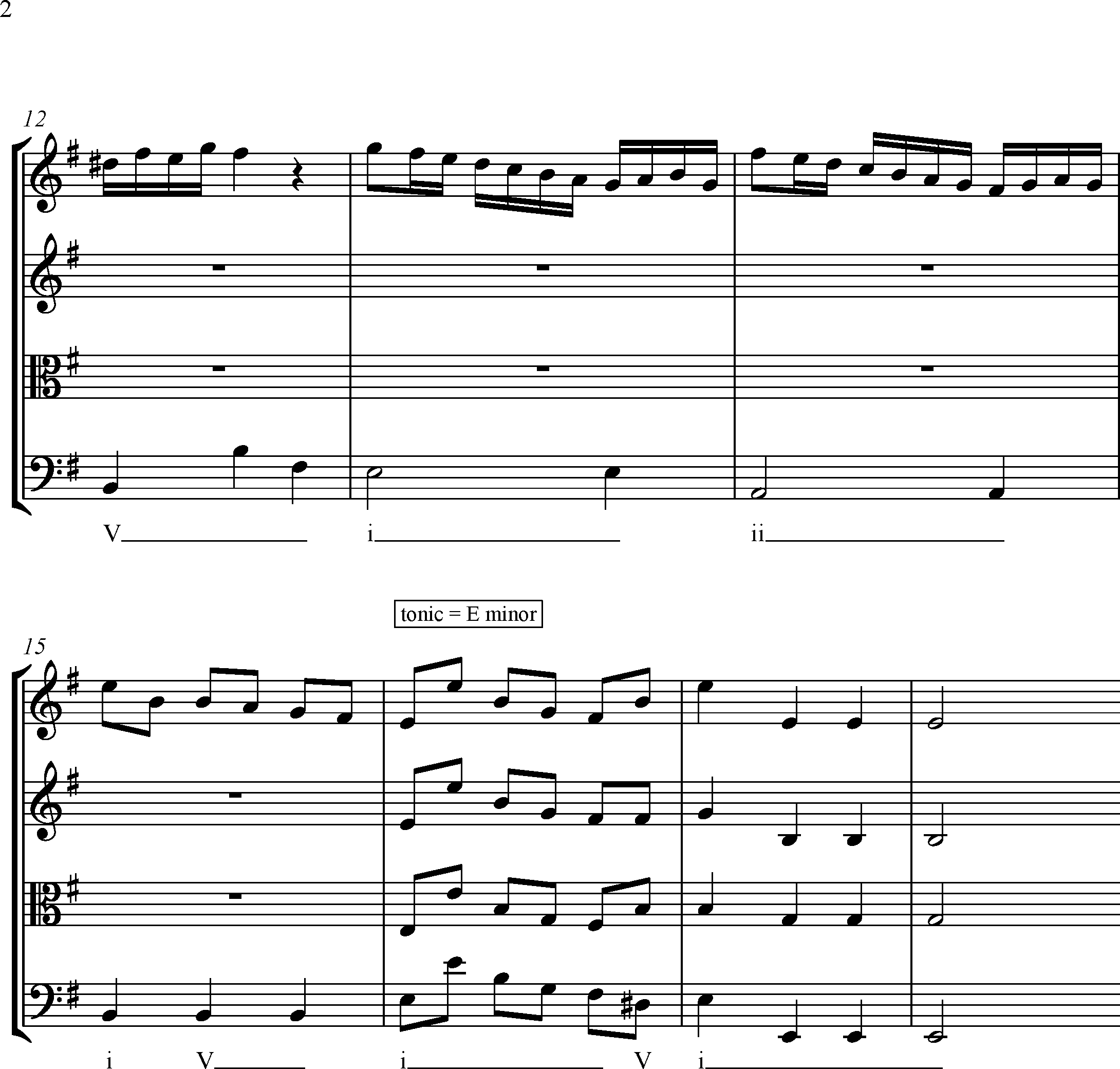Exercise 1
Compose a melody which modulates to one of these keys then create a second version which modulates to a different key. Here’s an example:
Fig. 4
Modulating a melody
A
tonic = E♭ major
perfect cadence in B♭ major
(i.e. dominant E♭ major)

B
perfect cadence in B♭ major
(i.e. relative E♭ major)

The tune Liverpool (figure 5) is by Ieuan Gwyllt is a good example of a hymn-tune which starts in the tonic (A minor) but changes often to other keys.
Exercise 2
Play only the melody then experiment with a variety of chords before listening to an outline of the harmony used by the composer. Concentrate on using the principal chords of the tonic key. The F# in bar 12 suggests that the melody modulates at least once.
Fig. 5
Liverpool
Ieuan Gwyllt
tonic = A minor
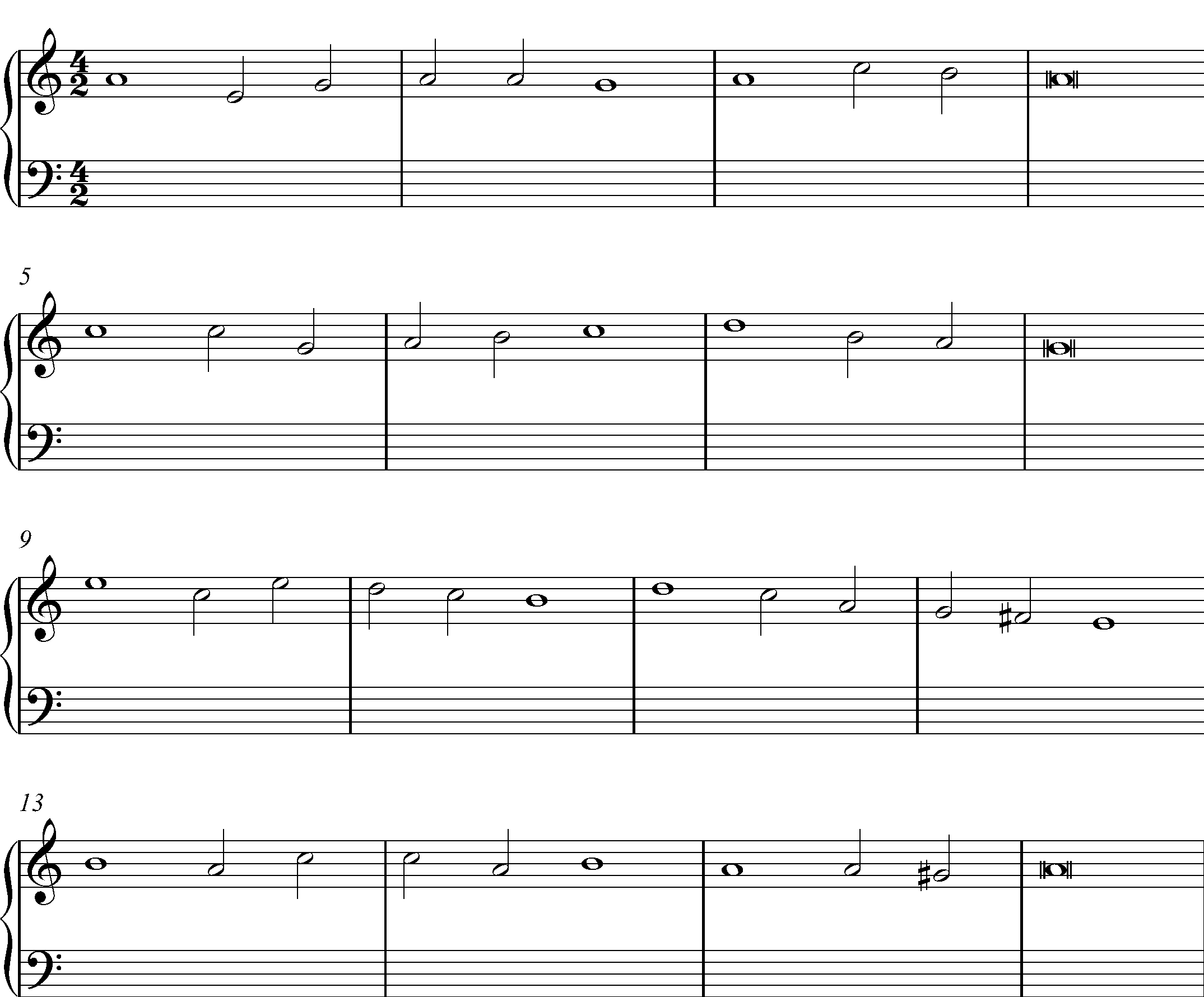
Figure 5 shows the keys that the original melody modulates to. Notice how elaborate the harmony is and how that intensifies the character of the hymn-tune and words.
Fig. 6
Liverpool
Ieuan Gwyllt
tonic = A minor
Amen cadence in C major
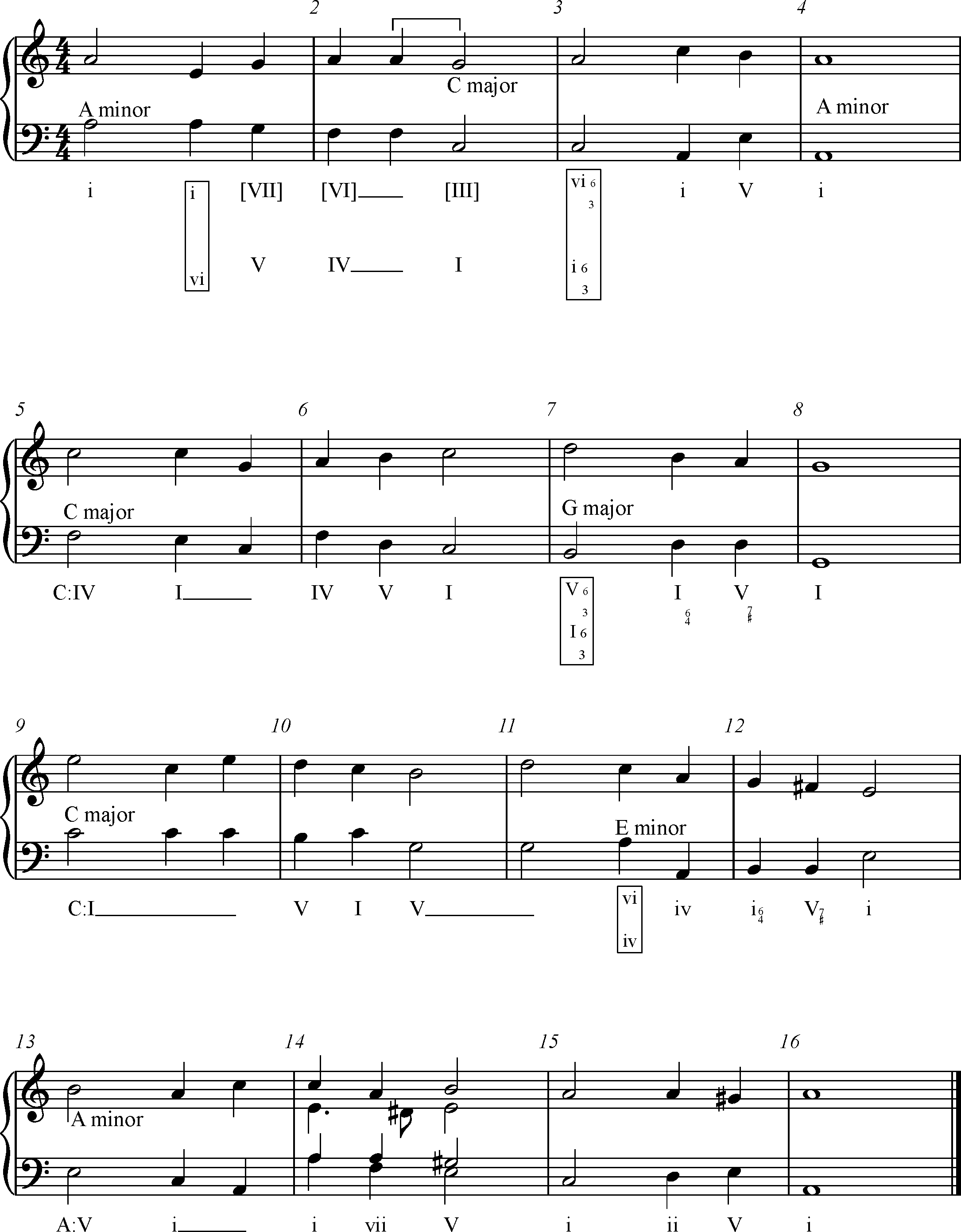
In the hymn-tune Liverpool phrases A, B and C move to new keys. The two boxes in the first phrase show how the composer has used pivot chords which lead the harmony into the new key.
- i.e. the tonic chord (A minor) in terms of the preceding phrase, or
- the submediant chord (A minor) in terms of the phrase’s key (C major) which carries on.
Bars 11 and 12 (end of phrase C) go to the minor dominant (i.e. E minor) but the tonic (A minor) is restated immediately in ar 13 (the start of phrase 4) and carries on until the end of the hymn-tune.
Notice that the composer uses the diminshed seventh chord before the dominant in bar 14. All the chords in phrase 4 confirm the tonic key A minor.
The composer has planned his keys so that they create strong musical expression to underline the message in the words that are used in the hymn.
Here is the pattern:
| Bar | Bar 2 | Bar 3 | Bar 4 | |
|---|---|---|---|---|
|
Phrase 1 |
A minor |
C major |
A minor |
A minor |
|
Phrase 2 |
C major |
C major |
G major |
G major |
|
Phrase 3 |
C major |
C major |
E minor |
E minor |
|
Phrase 4 |
A minor |
A minor |
A minor |
A minor |
By studying the first movement of Mozart’s String Quartet (K.157, figure 6), you’ll see a full modulation to the dominant (G major) being confirmed and remaining in the new key until the end of the Exposition.
Exercise 3
Look at the opening of the quartet. There are no performance directions given (dynamics, bowing marks etc); only the pitch and rhythm.
The chords have been notated in bars 1 – 4, 9 – 12 and 20 – 24.
- Name the chords in other parts of the quotation
- State three ways in which Mozart confirms the new key.
Fig. 7
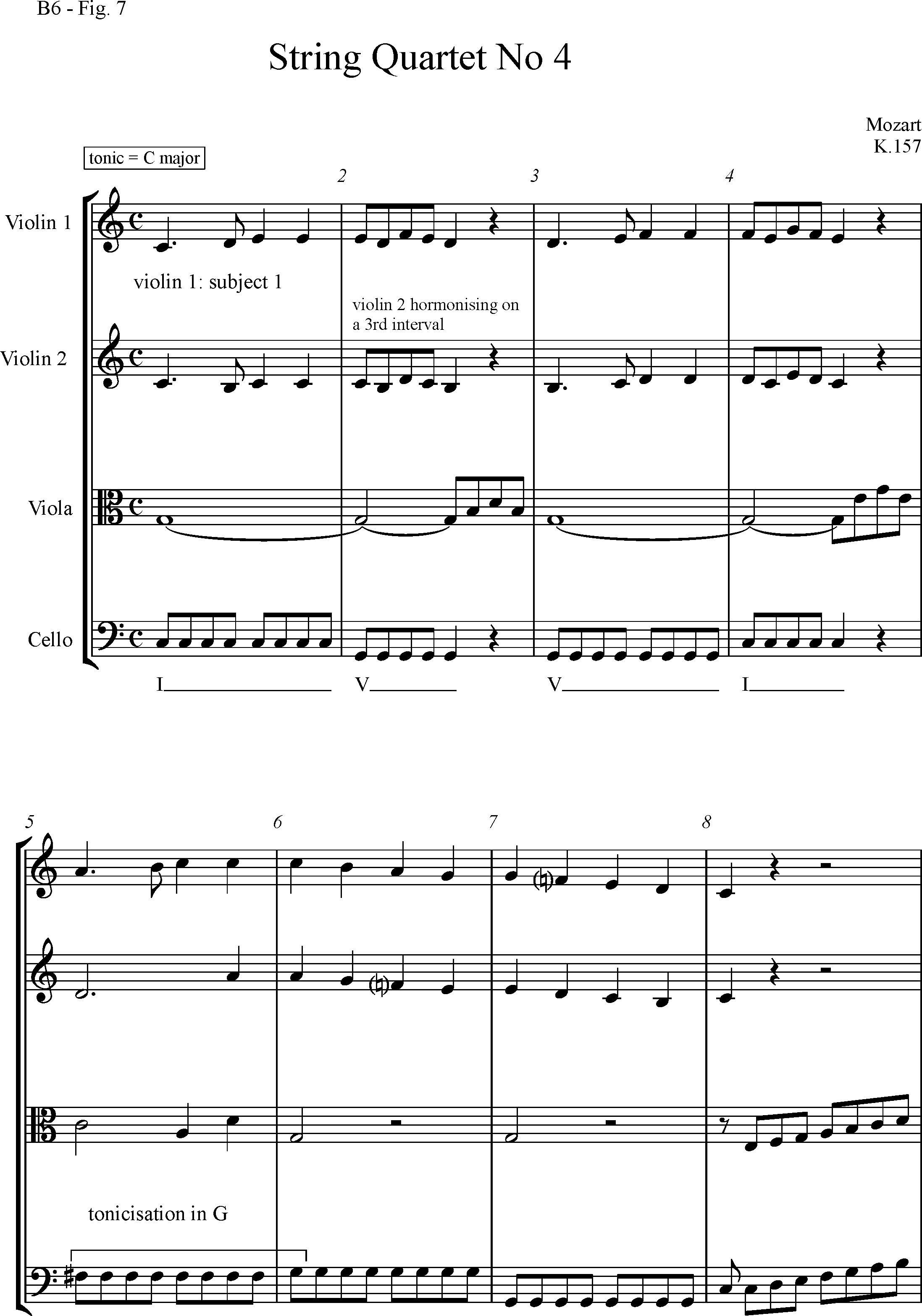
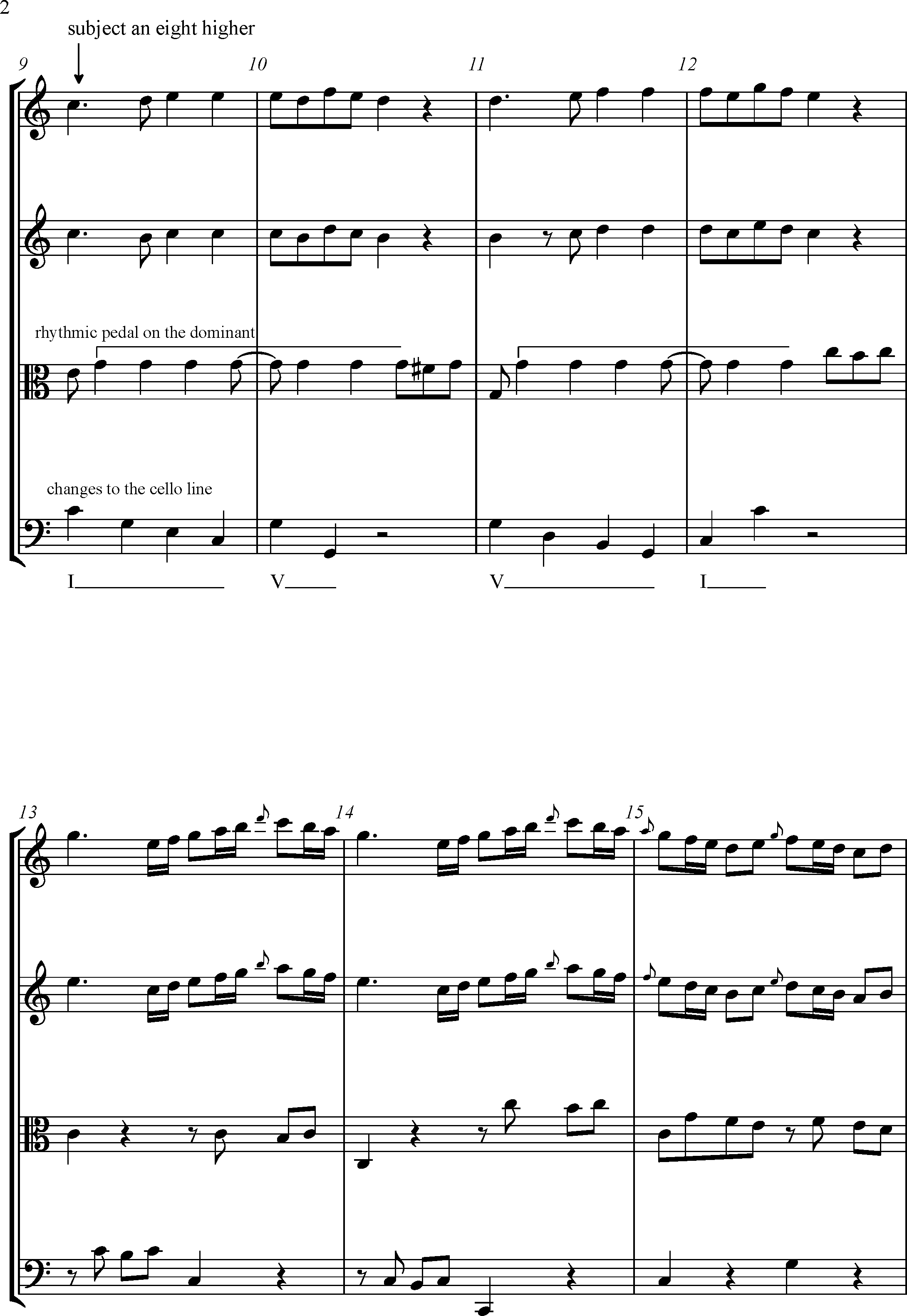
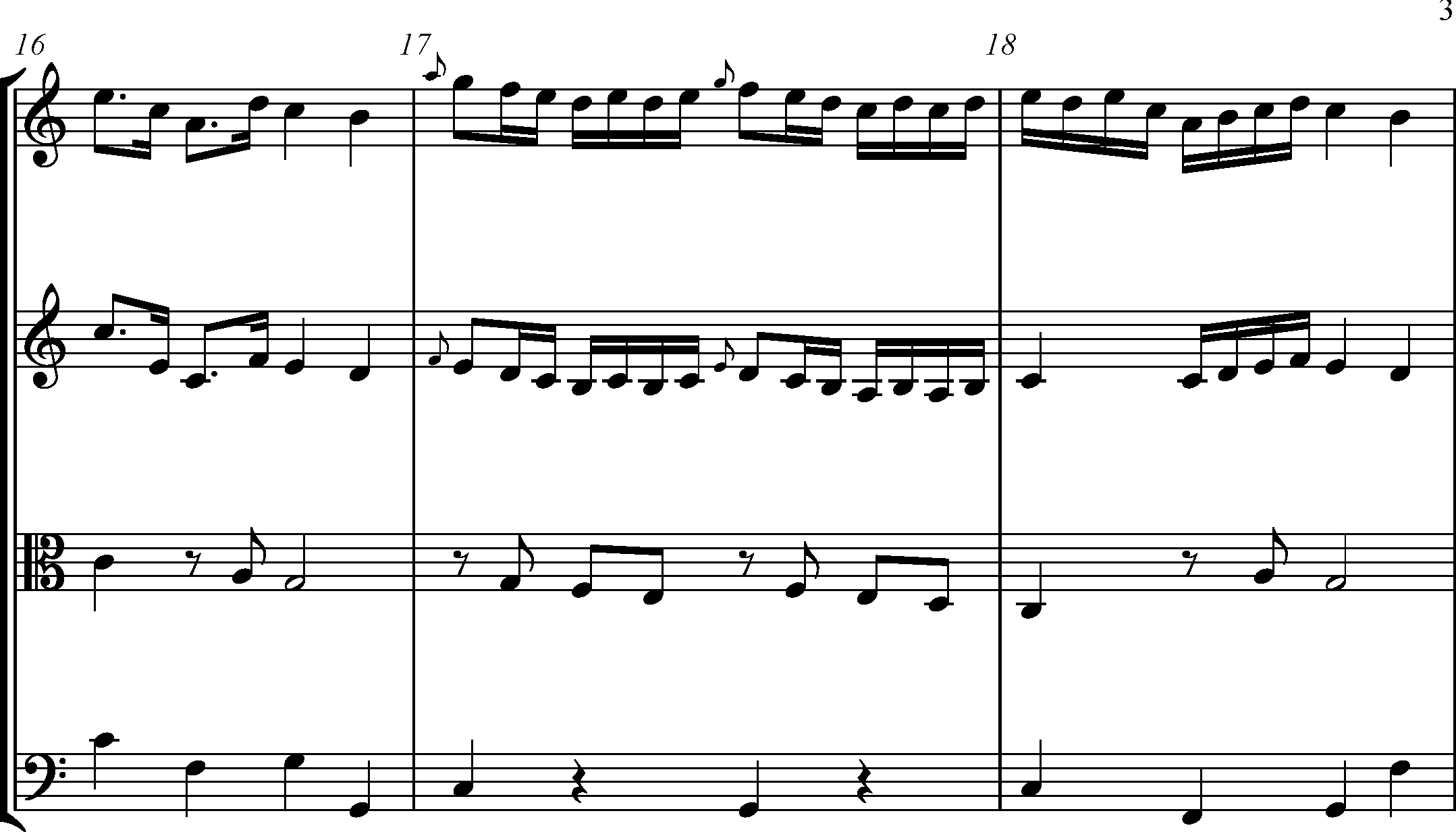
Imperfect cadence
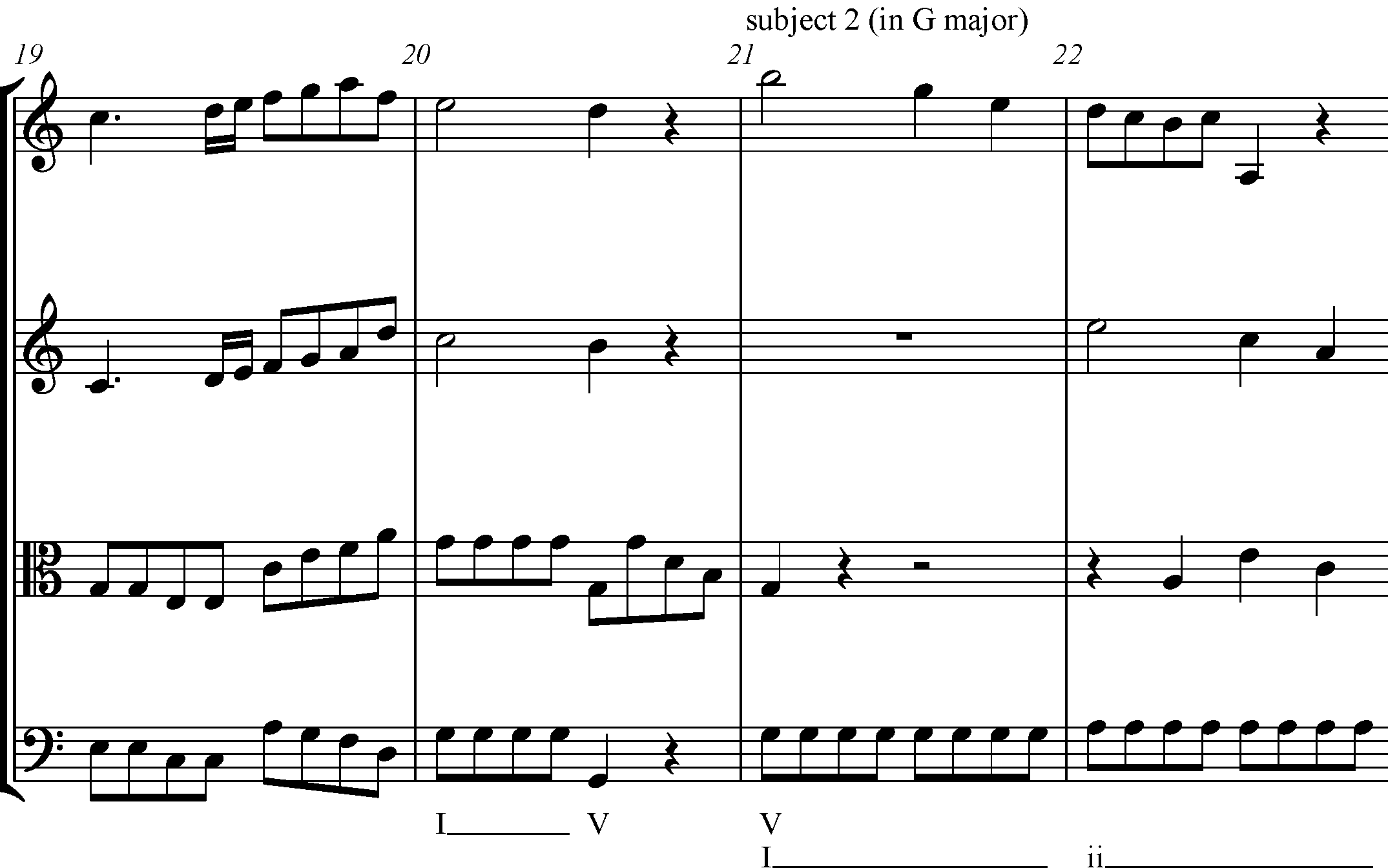
upper line chords = chords in C major
ower line chords = chords in C major
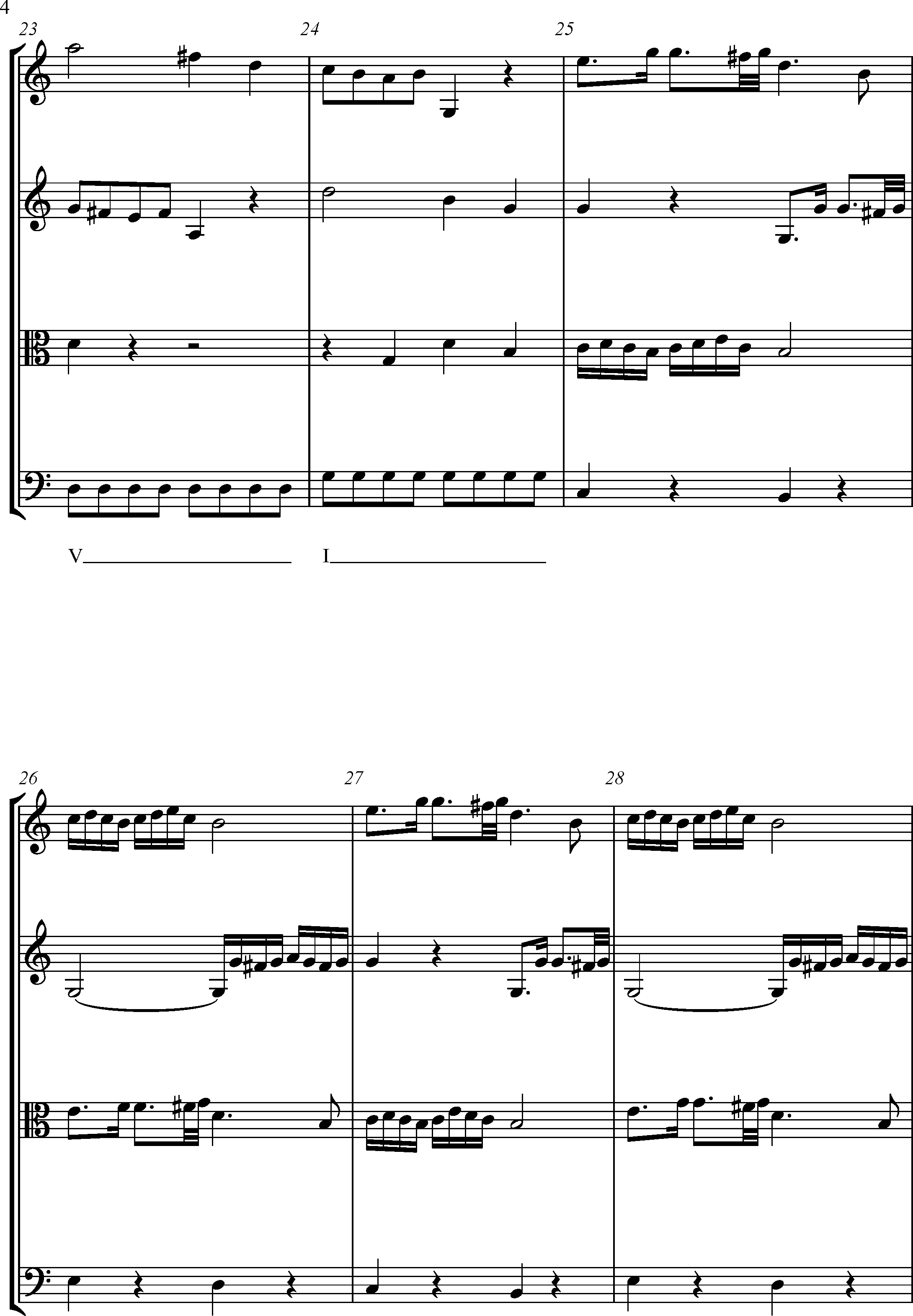
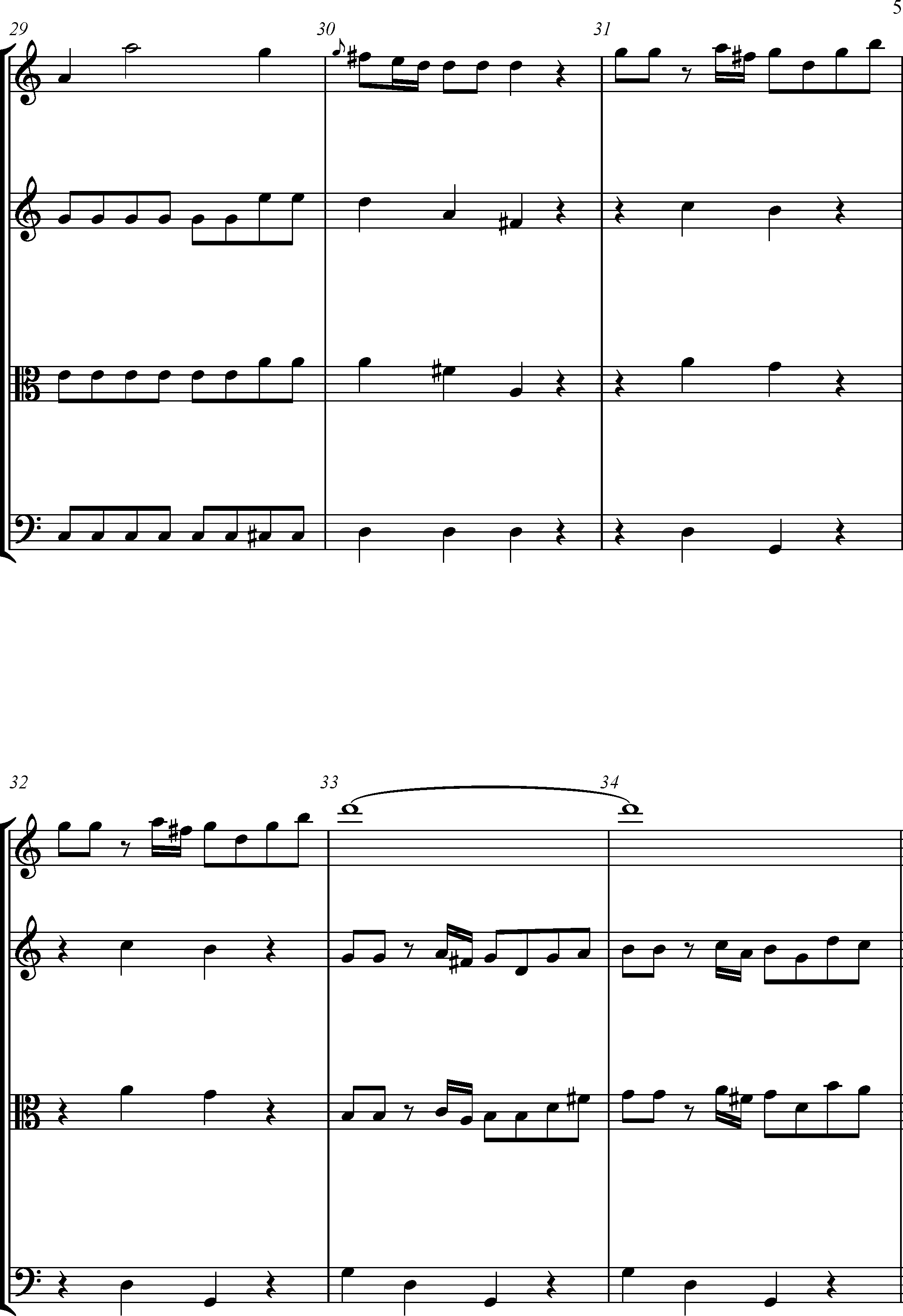
Exercise 4 (extended)
Complete a part of a string quartet which modulates to the relative minor key.
Figure 8 shows only the parts of violin 1 and cello. Complete the inner parts, namely violin 2 and viola. You should prepare to modulate in bars 9-12 and confirm the new tonic (E minor) by bar 16. Also, you should ensure that the 2nd violin and viola parts are compatible with the violin 1 and cello parts by using imitation and suspensions when appropriate.
Fig. 8

